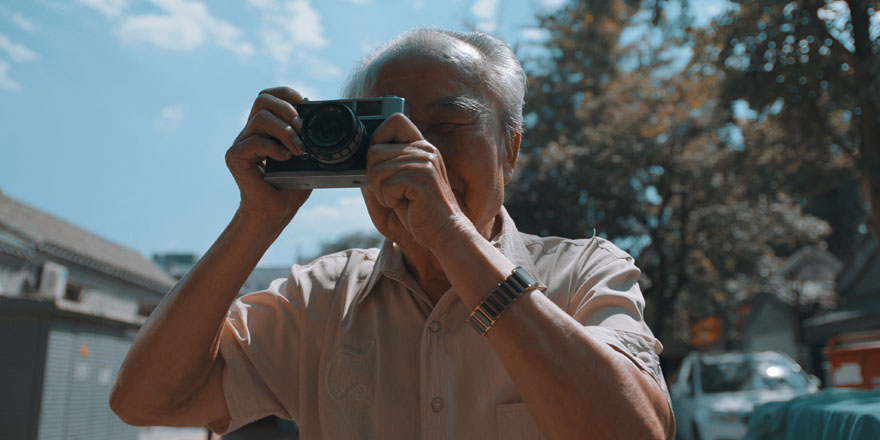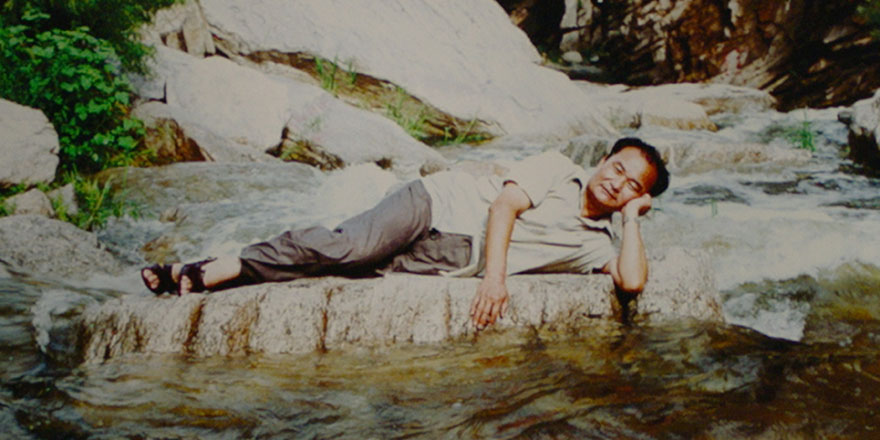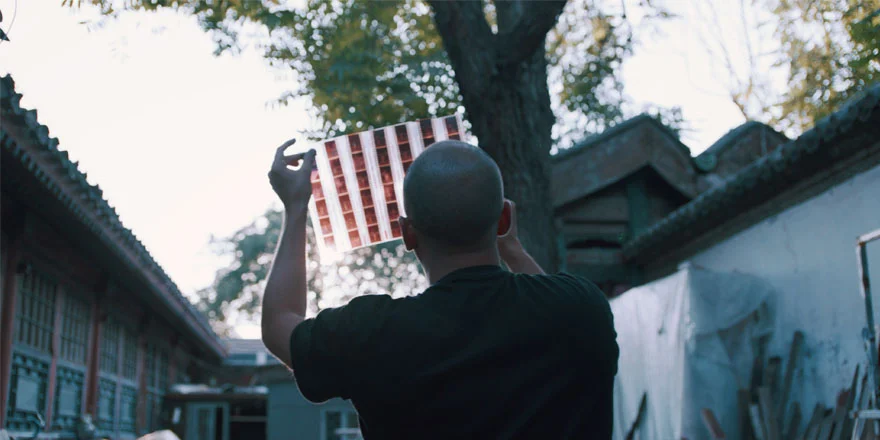History of Memory:
China Lost and Found
Collaboration with Redglass Pictures
Date: 2018
How a long-lost holiday photo became a symbol of a new China
by Patrick Rogers
“ French photo editor and collector Thomas Sauvin’s treasure hunt took him down a dusty lane, through a low gateway and into a grimy recycling plant on the industrial outskirts of Beijing. Then living in China, he was searching for photographs taken by ordinary Chinese citizens when a tip from a chemical recycler led him storeroom filled with piles of discarded negatives of 35mm film. “I started looking at them and they were negatives of photographs taken by everyday people, in huge quantities,” Sauvin says […].
Back at his studio, Sauvin realized the richness of the discovery. “At first the photos seemed quite common and banal, but the more negatives I looked at, they started to tell a story of China very different from every other picture taken by journalists and published in books,” he says. The scratched and faded negatives revealed pictures of families making funny faces at amusement parks, smiling women posing next to shiny new refrigerators and guests drinking and dancing at wedding celebrations. Mostly taken in the 1980s and 1990s during a time of explosive growth and massive social disruption, the images focused on intimate, carefree, everyday moments of joy and delight for Chinese families.
One of Sauvin’s favorites depicted a nameless man reclining on a rock in the middle of a picturesque lake, like a goofy middle-aged merman with a playful smile. “It was perfect. It had this element of humor, which I always try to convey to show how life was becoming freer and a bit happier in China after the hard years of the Cultural Revolution,” says Sauvin. He called his collection of pictures Beijing Silvermine, after the silver nitrate that recyclers extract from old negatives.
“法国摄影编辑兼收藏家苏文的寻宝之旅,带他沿着一条尘土飞扬的小道,穿过一个低矮的门洞,进入北京工业郊区一个肮脏的回收厂。当时生活在中国的他正在寻找中国普通百姓拍摄的照片,一位化工品回收商提供的线索让他找到了一个堆满废弃的35毫米底片的储藏室。"我开始观察它们,它们是日常生活中人们拍的照片的底片,数量庞大"苏文说。
回到工作室,苏文意识到这一发现背后的丰富。"一开始,这些照片看着很普通,很平庸。但随着我看的底片逐渐增多,它们就开始讲述一个与记者拍摄和发表在书上的其他照片截然不同的中国故事"他说。这些被刮花和褪色的底片承载了这样的场景:一家子在游乐园里扮鬼脸;女士面带微笑在崭新的冰箱旁摆弄姿势;宾客在婚宴上举杯乱舞。这些照片大多拍摄于20世纪80和90年代,当时的社会正处在飞速发展的混乱时期,这些照片集中反映了中国家庭日常亲密无间、无忧无虑的欢乐和喜悦瞬间。
苏文最喜欢的一张照片,是一个男人斜躺在风景如画的湖中的一块石头上,像一个憨态可掬的中年人鱼,面带俏皮笑容。"它有这种幽默的元素太棒了。我总是试图传达这种幽默的元素,来表现中国在经历了文革的艰苦岁月后,生活变得更加自由,更加幸福。"苏文说。他把自己收藏的照片称为“北京银矿”,名字取自回收商从旧底片中提取的硝酸银。
Beginning in 2011, Sauvin displayed selections of the photos in a series of hit exhibitions in China, the U.S. and Europe, winning prizes and acclaim for presenting a view of China that was fresh and surprising. That was true even for viewers who were born and raised there: “It was actually really illuminating to the people who saw it in China,” says Klein, the film’s co-director. “Not because they were surprised by the individual images, but by the impact a collection of images could have in explaining a specific time in the culture.”
There was, however, something missing in Sauvin’s story of recovered collective memory. In all the years that he toured the world and shared his photos on the Chinese social media site Weibo, he never had contact with any of the countless people in the Beijing Silvermine pictures. “I was surprised. It just never happened,” he says — until recently.
[…]
As fate would have it, that person was the man perched on the stone in a lake — one of the highlights of the Beijing Silvermine collection. His name was Xu Zhen, a retired engineer living in Beijing. He had only learned that the decades-old photo was part of Sauvin’s international exhibitions when the ex-boyfriend of his daughter saw the picture online and recognized its subject as a much-younger Xu. When after many long phone conversations, Sauvin finally met Xu and his wife at a restaurant in the Chinese capital in December of 2016, it felt something like a reunion, Sauvin recalls. Xu talked about his love of photography — he arrived with six photo albums — and his talent for cooking, dancing, playing pool and karaoke. It was destiny that the two would finally meet, Xu said. […]”
Read more
China Lost and Found is part of HP's original documentary project, History of Memory, which celebrates the power of printed photos.
从2011年开始,苏文参加了中国、美国和欧洲举办的一系列热门展览。参展照片呈现出的新鲜和令人惊讶的中国景观让他和“北京银矿”赢得了许多奖项和赞誉,即使对于土生土长的中国观众来说,也是如此。“实际上,这些照片对于观看中国的人很有启发性,"该片的联合导演克莱因说,"并不是因为单个影像使他们惊讶,而是一组影像能诠释某一时期的文化让他们感到惊讶。"
然而,苏文抢救集体记忆的故事,始终缺少着一环。在他满世界办展、在微博上分享照片的这些年里,他从未与北京银矿照片里的人物碰面接触过。"我很吃惊,但就是从未发生过"他说。
命运使然,那个人就是栖息在湖中石头上的人——“北京银矿”收藏中的亮点之一。他叫徐震,是一位居住在北京的退休工程师。直到女儿的前男友在网上看到这张照片,他才知道这张几十年前的照片成为苏文展览里的一部分,并在照片上认出了年轻时候的自己。苏文回忆说,当经过多次长时间的电话交谈后,他终于在2016年12月,在北京的一家餐厅见到了徐和他的妻子,感觉就像重逢一样。徐先生提及了他对摄影的热爱——他带来了六本相册——以及他在烹饪、跳舞、打台球和卡拉OK方面的天赋。徐说,两人最终相遇是命运的安排。”


